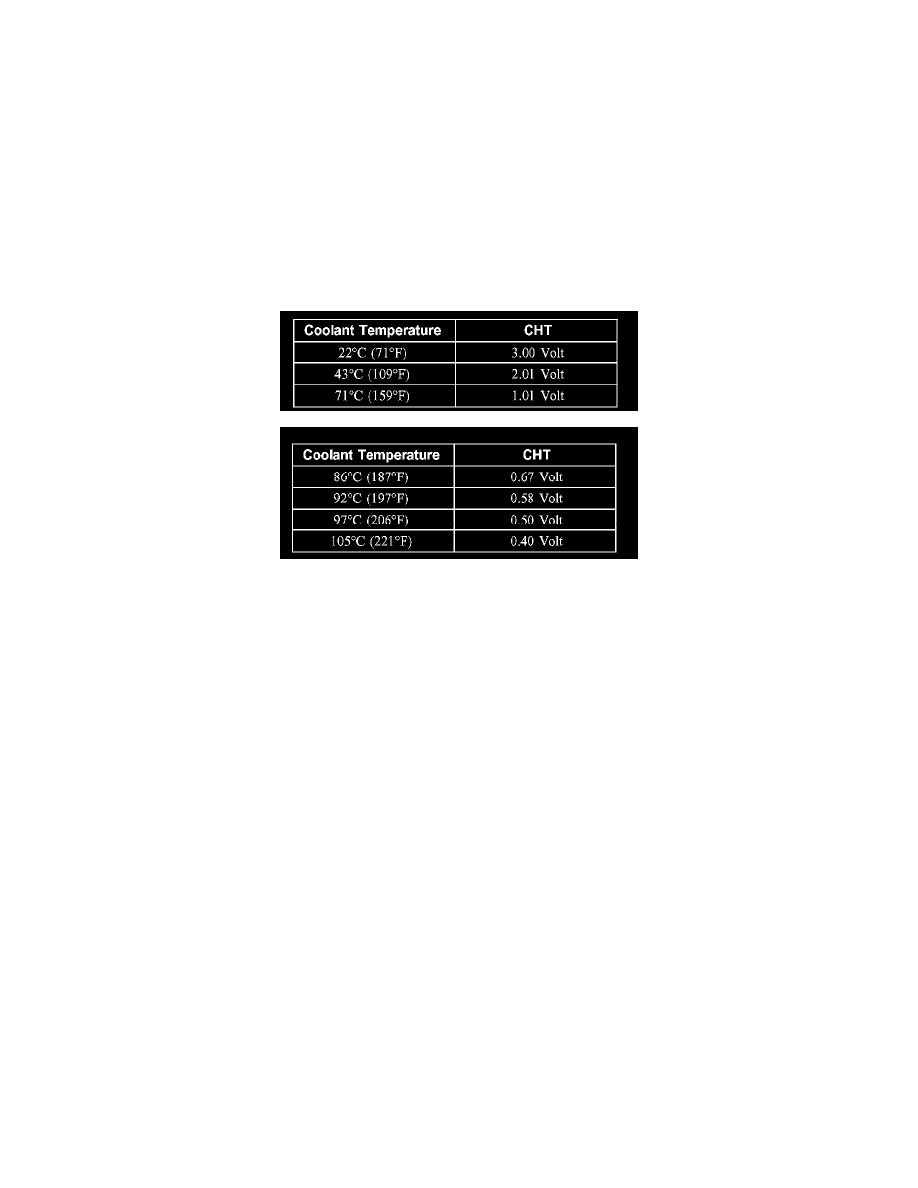Navigator 4WD V8-5.4L VIN 5 (2006)

Thermostat: Testing and Inspection
Thermostat
A new thermostat should be installed only after these electrical and mechanical tests have been carried out.
Thermostat - Electrical Test
NOTE: The electrical thermostat test is most accurate if carried out indoors at less than 37.8°C (100°F) ambient air. This test may be carried out
with or without the hood open and with the engine warm or cold.
1. Check the engine coolant level. Fill as needed.
2. With the ignition OFF, voltage values (0-5 V) may now be monitored while the cylinder head temperature (CHT) sensor retains its connection to
the wiring harness.
A diagnostic tool may be used to monitor the CHT on vehicles equipped with data link connector (DLC). The SBDS sequence to use for the screen
is: Toolbox-Electronic Engine Control and DCL-Item.
3. Place the automatic transmission in PARK (P) or the manual transmission in NEUTRAL (N) and engage the parking brake.
4. Start the engine and allow the engine to idle throughout this test. Allow the engine to run for 2 minutes, then record the CHT voltage. Record the
CHT voltage every 60 seconds. When the CHT voltage trend changes direction or only changes slightly (0.03 volt or less) from the previous
reading, record this as the thermostat opening voltage. Use the voltage and corresponding coolant temperature chart.
5. If the coolant thermostat opening voltage is greater than 0.67 volt and less than 86°C (187°F), install a new coolant thermostat.
6. If the coolant thermostat opening voltage is less than 0.58 volt and greater than 86°C (187°F), the coolant thermostat is good and a new coolant
thermostat should not be installed. GO to Symptom Chart for further instructions. See: Testing and Inspection/Symptom Related Diagnostic
Procedures/Diagnosis By Symptom
Thermostat - Mechanical Test
1. Remove the thermostat.
2. Check the thermostat for seating. Hold the thermostat up to a lighted background. Leakage of light around the thermostat valve at room
temperature indicates that a new thermostat should be installed. Some thermostats have a small leakage notch at one location on the perimeter of
the thermostat valve, which is considered normal.
3. Immerse the thermostat in a boiling antifreeze and water mixture.
4. For additional information, refer to Specifications for thermostat opening temperature.
